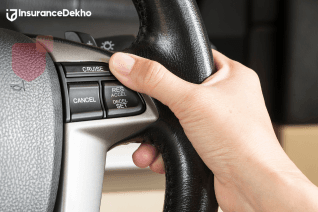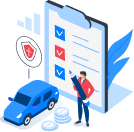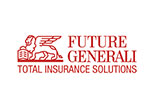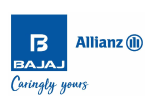Vehicle Hazard Lights: When and How to Use Them for Safety
Have you ever found yourself stuck in traffic, or your car breaks down suddenly, and you immediately switch on your hazard lights? It’s a common reflex, but do you know when it’s really appropriate to use them? Hazard lights are important for signaling danger, but many drivers aren’t sure about the right moments to activate them.
In this guide, we’ll help you understand when and how to use hazard lights effectively, ensuring you stay safe and communicate clearly with other drivers.
Key Highlights
-
Hazard lights alert drivers to emergencies like breakdowns or accidents.
-
Use them for breakdowns, roadside emergencies, or poor visibility.
-
Avoid using them to signal direction or in tunnels/traffic.
-
In India, misuse of hazard lights can lead to penalties.
-
Best practice: Use headlights/fog lights in low visibility, not hazard lights.
What Are Hazard Lights and How Do They Work?
Hazard lights, also known as emergency flashers, are a crucial safety feature in every vehicle. When activated, all four of your car’s turn signal lights blink at once to alert other drivers to a potential hazard.
The hazard light button, typically a red triangle symbol on your dashboard, can be pressed quickly in emergencies. When used correctly, hazard lights help other drivers see your car in dangerous or unusual situations, such as breakdowns or accidents.
When Should You Use Hazard Lights?
1. Vehicle Breakdown or Accident
If your car stops suddenly on the side of the road, whether due to a breakdown or an accident, hazard lights make your vehicle more visible, especially in low-traffic areas or highways.
2. Roadside Emergencies
Hazard lights should also be used when you’re dealing with a roadside emergency, like changing a flat tire or waiting for roadside assistance. These signals help other drivers notice your presence, preventing accidents.
3. Low Visibility Conditions
In heavy rain, fog, or other weather conditions that reduce visibility, hazard lights can help increase your visibility to other drivers—though it's important not to rely solely on them.
When Not to Use Hazard Lights
1. Driving in Fog or Rain
Contrary to popular belief, using hazard lights in fog or rain isn’t recommended. They can distract other drivers and reduce your visibility instead of improving it. Instead, use your headlights and fog lights if available.
2. At Intersections
Some drivers mistakenly use hazard lights to signal they’re moving straight through an intersection. This can confuse other drivers. Always use regular turn signals to show your intentions.
3. Driving Through Tunnels
Hazard lights should not be turned on while driving through tunnels unless you need to stop or there’s an emergency. Inside tunnels, visibility is already improved with proper lighting, and hazard lights can lead to miscommunication among drivers.
Legal Guidelines and Penalties for Misuse in India
In India, the use of hazard lights is regulated under the Motor Vehicles Act. Hazard lights should only be used in specific situations, like when your car is stationary due to a breakdown or accident.
Improper use of hazard lights can lead to penalties, including fines and demerit points on your driving license. In some cases, repeated misuse could result in further legal consequences.
Best Practices for Using Hazard Lights
To maximize the effectiveness of hazard lights, follow these best practices:
-
Activate immediately when you’re dealing with an emergency or breakdown to make your car more visible to other drivers.
-
Use headlights and fog lights in low-visibility conditions like fog or rain, as they are more effective than hazard lights.
-
Avoid using hazard lights while driving slowly unless your vehicle is stationary. Using them while moving can confuse other drivers and disrupt traffic flow.
Knowing when to use hazard lights can be the difference between staying safe and causing confusion on the road. These lights are a powerful tool for alerting other drivers in emergencies, but should be used correctly to avoid misunderstandings. Always remember to activate your hazard lights during breakdowns, accidents, and low-visibility conditions, but avoid using them in non-emergency situations.














































